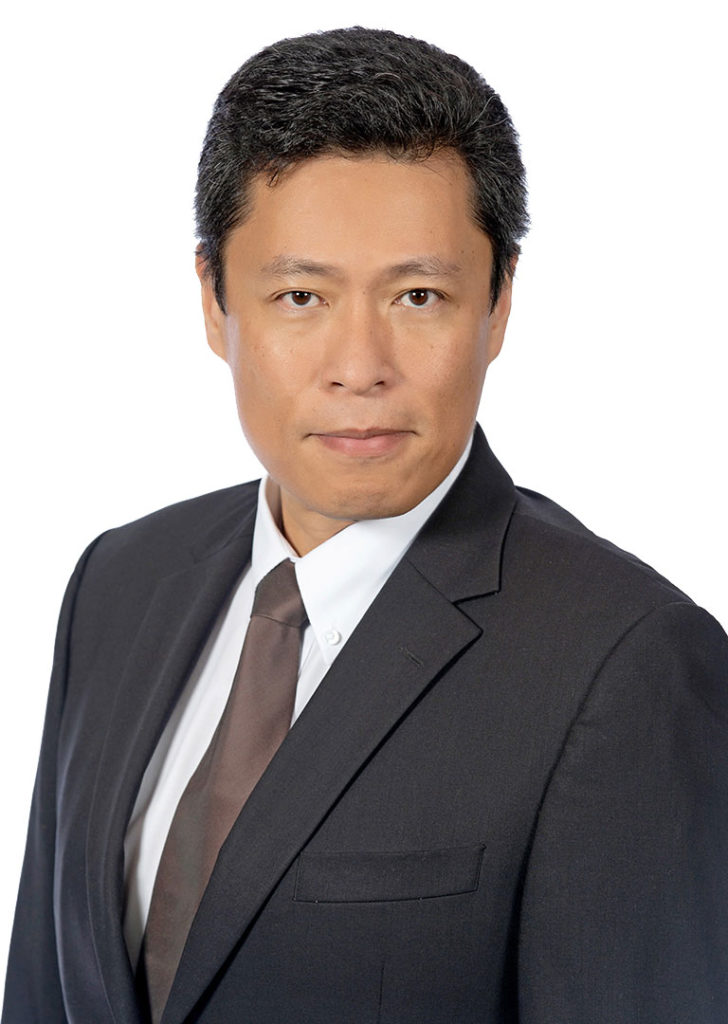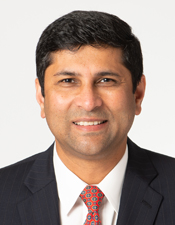CIO Ryan Hicke is now CEO Ryan Hicke. The chief executive at public company SEI Investments has been featured twice before in StrategicCIO360, as a CIO. Now leading the provider of investment solutions and technology to the financial services industry, Hicke said that other than a change in responsibilities, his focus on collaboration, “which was important in my role as CIO, is still the same, if not more so.”
“My job is to engage people to bring ideas to the table,” he said. “If I ever get to a point where I think I know more than anybody else here, I will fail. Quickly. Ego is the enemy in leading any organization.”
Until recently, the idea of an IT leader taking control of a midsized or larger company was an improbable prospect. This is no longer the case, with several CIOs ascending the corporate ladder to the top rung, either at their own companies or others. Examples include Greg Carmichael, promoted from CIO to CEO at Fifth Third Bank, and Stephen Gillett, former CIO of Starbucks and today CEO at Alphabet’s Verily Life Sciences.
The reason has to do with the ongoing digital transformation of every business, requiring the transformation of CIOs from inward-looking, order-taking “back office” technology leaders into strategic business leaders. In a recent StrategicCIO360 feature, Greg Douglass, global lead for technology, strategy & advisory at Accenture, called today’s strategic CIO the “new corporate rockstar” of the C-Suite.
While such executives “were always an important member of the band,” said Douglass, “they hung back in the shadows. In leading the digital transformation on behalf of the CEO, they’ve been thrust into the limelight.” As the careers of Carmichael, Gillett and Hicke validate, CIOs can be headliners, too, leading people, operations, customers and strategy to generate profitable revenue.

None of this is surprising to Douglass’ colleague Penelope Prett, Accenture’s chief information, data and analytics officer. “As businesses go through compressed transformations, technology is at the heart of every business process,” said Prett. “It’s no wonder that CIOs over the past decade have emerged from `fortress IT’ to sit hip-to-hip with their business partners in driving transformation, collaborating and sharing data to serve customers, employees and strategy.”
Such sit-downs demonstrated that CIOs with a combination of technology chops, creativity and business acumen are able to solve knotty problems and manage disparate groups of people toward the provision of better products, services and ways of working. “The characteristics of leadership that make for a great CIO are no different than the characteristics that make for great leaders, the CEO included,” Prett said.
Hicke fits this leadership profile. Throughout his quarter-century career at SEI Investments, which manages, advises or administers approximately $1.2 trillion in assets, he has held leadership positions across the global company’s investments, operations and technology organizations. This breadth of experience positioned the 44-year-old to become CEO in June 2022.

“CIOs who become CEOs have to be able to connect business strategy with the technology strategy, which used to be two separate disciplines,” said Hicke. “In my case as CIO, I needed to create a better connection between our client engagement and growth strategies and our technology and operations personnel. Since I was not a deep technology expert, I needed to better understand how clients used our services and how we delivered them behind the scenes.”
Six years as CIO flattened Hicke’s learning curve. “As my technical proficiency increased, I became much more intelligent and articulate about technology, which was really important in my discussions with customers and prospects,” he said. “I actually think the entire C-Suite, irrespective of their roles, needs to become more proficient around technology. The skills in any C-Suite job are broader that they used to be.”
Widening Responsibilities
This is the case for Wendy M. Pfeiffer, CIO at public company Nutanix, a leading global provider of cloud solutions and services with 6,000 employees and more than $1.28 billion in recurring revenue. Pfeiffer said she has a seat at the table, is engaged in non-IT activities like ERM (enterprise risk management) and ESG (environment, social and governance), and sits on three boards, leading the audit committee at one of them.
“I consider myself to be an operating CIO, in the sense that I am responsible for our operational excellence, something inconceivable a decade ago,” said Pfeiffer. “I confer regularly with my peers and other business leaders, discussing business risks and opportunities. We may not discuss technology at all. That’s not unusual among other CIOs I know. These are definitely changing times for the position.”

Times have changed for Max Chan at public company Avnet, a more than century-old global technology distributor to the aerospace, automotive, energy and other industries in 140 countries, with $24.3 billion in global revenues. “Things are accelerating so fast here,” the CIO said. “My organization continually provides thought leadership to the regional presidents and department functions, helping them address business problems and not just technology problems. We’ve moved up the value chain.”
This ascension requires Chan to establish a clear vision in the IT organization regarding the company’s business model and strategy. Team members spend less time on “hands-on technical issue,” he said, and more time providing advice to customers, business unit heads and function leaders. “As we move forward in our digital transformation, we’ve taken on an important change management consulting role, listening to our customers’ and colleagues’ challenges, and drumming up solutions.”
Chan’s leadership capabilities derive from his wide-ranging corporate experiences. Early in his career, he was a developer of bank ATMs. He didn’t enjoy the work and shifted into selling computer equipment like modems, followed by different stints marketing websites, e-commerce tools and telecom circuits for wide area networks. “By the time I switched into leading internal IT, I had a story to tell,” he said.
This narrative is evident in leading Avnet’s digital transformation, Chan’s most important and strategic responsibility, he said. “IT sees every single facet of the business, not just this function or that one, but everything, end to end. In the old days, we made sure the company was able to operate, but that’s table stakes now. Our responsibility is strategy delivery, advising the business on what will provide the biggest bang for the buck for their investments.”
Santhosh Keshavan has a similar remit. The CIO at public company Voya Financial, a leading health, wealth and investment company with 14.3 million institutional and individual clients and $711 billion in total assets under management, said his focus is as a trusted partner to the C-Suite, business and function leaders and customers.

Like Chan’s professional background, Keshavan’s resume is part-technology, part-business. He has a BS in Computer Science and an MBA, and served stretches at SunGard in operations and Fidelity Investments as the vice president of the pricing and cash management division before assuming his first CIO role at Regions Bank. “Like other CIOs, my leadership position comfortably extends beyond the IT organization to lead people on a cross-functional basis in initiatives achieving our vision and strategy,” he said.
One such initiative is MyVoyage, a one-stop digital platform launched in September 2022 that integrates workplace benefits with an employee’s external banking and credit card accounts, presenting a 360-degree view of a person’s financial picture to optimize savings. “It’s one of my most important leadership endeavors,” Keshavan said, “as its successful completion positively affects the lives of so many people.”
In plotting the initiative back in 2020, the CIO established a three-year roadmap, a series of project milestones and a set of guiding principles, chief among them the breadth of platform functionality. “In early coffee sessions, I told everyone that we cannot overpromise, but we also must not under-deliver,” he said.
He is not alone in piloting a critical corporate project. Pfeiffer is presently co-leading an initiative at Nutanix focused on the future of work, in tandem with the company’s HR leader. An initiative of this scope and importance in the past would have been led exclusively by the HR organization.
“HR has always been entrusted to think about and manage the employee experience and lifecycle, but the sudden move to hybrid work altered this,” said Pfeiffer. “As at other companies, we’re in a mixed mode (of work), trying to understand how the different modes affect productivity, engagement, attrition and retention. …These are conversations I never would have been a part of previously. I’m up to my elbows in it now.”
One conversation regards the onboarding of new employees. Historically, this process for new employees to acquire organizational knowledge involved physically meeting managers and colleagues, finding a desk, and receiving training on the use of software and other tools, Pfeiffer said. “Now onboarding is a mixed bag of physical and remote (engagements). My input as co-leader is related not just to the operating technology but also the development of design principles supporting more personalized experiences in a hybrid work environment.”
Agile Leadership
The former and current CIOs maintain that their leadership of IT and computer programming puts them in good stead to run a company, since the position typically involves the need to pivot quickly. CIOs and CTOs typically ride herd on the development of iterative technologies, a process in which a new software or app is improved following repeated reviews and tests.

“Our capacity to make real-time adjustments in technology is a much-needed C-Suite skill,” said Pfeiffer. “CIOs are adept at using data to interpret and refine customer and employee experiences, programming machines, for example, to enhance the customer experience or assume more of the mundane manual work performed by employees. In a world that constantly changes, this ability to pivot is a crucial skill set for a CEO.”
Prett agreed that agility is a crucial leadership skill set. “The pandemic forced changes on how companies viewed themselves and engaged with customers and employees,” she said. “For example, it showed that a business could be shut down without notice. This possibility requires companies to become more agile, flexible and faster. Where do you go to get that (agility)? The answer is the CIO.”
Or, in certain cases, the chief technology officer. Jason Liebrecht, CTO at Radicle Science, a provider of AI-driven clinical trial processes for non-pharmaceutical health products like vitamins, minerals and probiotic supplements, attributed his success leading IT teams to the agile methodologies he learned as a software engineer in U.S. Army Military Intelligence. He subsequently served as a CTO at startups in the defense, pharmaceutical and wearables sectors.
“I’ve observed over the last 25 years how software engineers have successfully applied their experiences in agile methodologies and Kanban (a lean manufacturing scheduling system) to dynamic business problems and solutions,” he said. “We’re able to identify issues and priorities quickly, then shift and pivot in our solutions. The ability to quickly adjust to an unexpected development is important to leading the IT team, a business function or the entire company. They’re all organizations.”
Radicle Science is a fast-growing B-Corp with 27 fulltime employees as well as supporting contractors, who collectively hold more than 100 advanced university degrees. The company serves clients ranging from startups to multinational public companies, including Gaia Herbs, Charlotte’s Web and BioOptimizers.

Liebrecht’s leadership style is as an enabler, he said, echoing comments made by the other IT leaders. “I give my team members ownership of what they do, empowering them to make decisions; I’m there to help them develop the capabilities they need to understand the problems our scientists and customers need solving. I give them a safety net to make mistakes; nothing catastrophic, of course, but that’s how they will gain wisdom. Fear cripples a lot of teams.”
Prett concurred. “It’s a fallacy that businesses should not tolerate mistakes or half-baked ideas; there is merit in suffering short-term setbacks that lead to longer-term value,” she explained. “The move to agile methodologies, breaking down big structures and creating small creative groups with the freedom to take risks and accept failure as a necessary part of the growth journey, drives true transformation.”
To pilot such important CIO initiatives, companies need to provide a range of different career opportunities across the organization to learn new skills. “Businesses need to ditch the old `org chart’ and embrace fungibility,” said Hicke. “We’re very open-minded about letting someone in one role transition into another role, positioning them for future management and leadership positions.”
His career at SEI, which began as an account executive in 1998 and progressed through skills-building stints in sales, operations and technology, exemplifies these leadership possibilities. As the CEO put it, “Lateral career movements are the modern equivalent of climbing the rungs of the old corporate ladder.”









